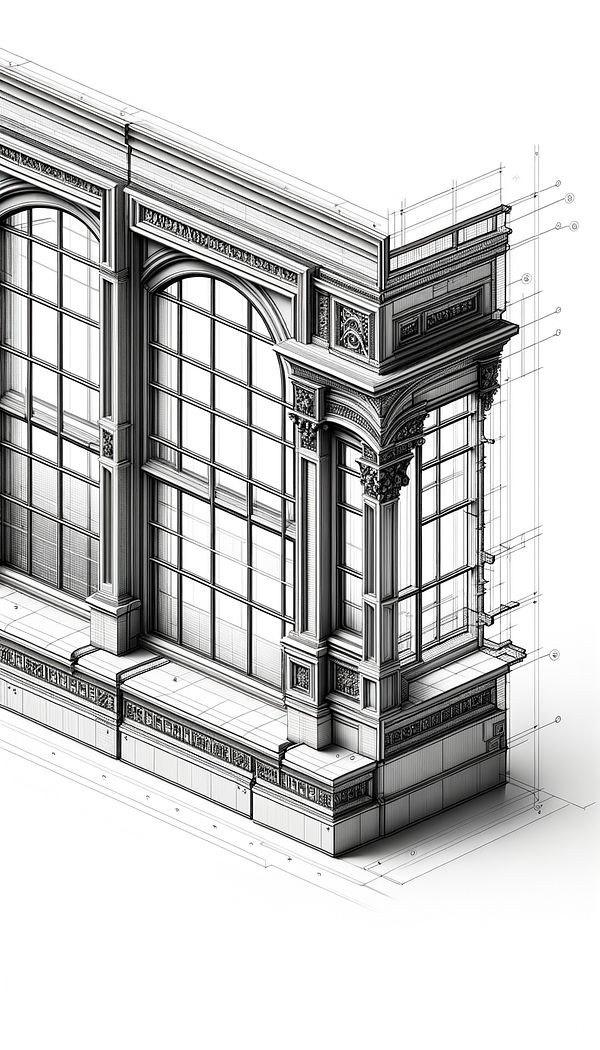What is a Mullion?
A vertical bar between the panes of glass in a window.
Description
A mullion is an architectural element that plays a significant role in the structure and appearance of windows. This structural component is essentially a vertical bar or divider that separates and supports panes of glass within a window. While mullions primarily serve a functional purpose by providing structural support, they also have aesthetic value, contributing to the overall design and style of a building's facade.
Mullions can be made from a variety of materials including wood, metal, aluminum, and PVC. The choice of material can significantly influence both the performance and the look of the window. In historical architecture, mullions were often elaborately carved and prominently featured in Gothic and Tudor styles, adding an element of decorative detail. In modern designs, mullions tend to be more streamlined and minimalist, reflecting contemporary tastes and architectural trends.
Beyond their structural and aesthetic roles, mullions also contribute to the thermal performance of windows. When paired with modern glazing techniques, mullions can help reduce heat loss and improve energy efficiency, making them an important consideration in sustainable building designs.
Usage
Mullions are commonly used in various architectural styles, from the ornate windows of Gothic cathedrals to the sleek, minimalistic designs of contemporary buildings. They are found in both residential and commercial buildings, contributing to the architectural character and stylistic coherence of facades. In historic preservation, restoring or replicating original mullions can be crucial for maintaining the building's authentic appearance.
FAQs
-
Can mullions be removed from a window?
Yes, mullions can be removed or modified, but this often requires professional assessment to ensure it won't compromise the window's structural integrity or performance. In some cases, mullions are integral to the window's design, making removal challenging.
-
Do mullions affect the energy efficiency of a window?
Yes, mullions can impact the thermal performance of a window. Their material and design influence how well a window insulates and protects against heat loss. Modern mullions can be designed to enhance energy efficiency, especially when combined with high-performance glazing.
-
Are there different types of mullions?
Yes, there are various types of mullions, including structural mullions that support the weight of the window and purely decorative ones that add aesthetic value. The design and material of the mullion can vary, reflecting different architectural styles and preferences.
Practical Application
When designing or renovating a building, consider the role of mullions in enhancing both the aesthetic appeal and functional performance of windows. Choosing the right material and design for mullions can significantly improve a building's facade while also contributing to energy savings through improved window insulation. For historic buildings, careful restoration or replication of original mullions is essential for preserving their architectural integrity.
-
Architectural Elements199 articles
-
Design Styles478 articles
-
Materials & Textiles360 articles
-
Construction & Building86 articles
-
Sustainability & Eco-Friendly Design69 articles
-
Modern StyleModern style in interior design refers to a design movement that emphasizes simplicity and function, incorporating sleek lines and a minimalist aesthetic.
-
Bracket FootA bracket foot is a decorative foot on a piece of furniture, characterized by its curved or scrolled outline.
-
Open PlanOpen plan refers to a floor layout without walls or barriers between different living spaces.
-
ModularityModularity refers to the design principle of creating components that can be easily combined or separated to adapt to changing needs or spaces.
-
VictorianVictorian refers to a design style that emerged during the reign of Queen Victoria.
